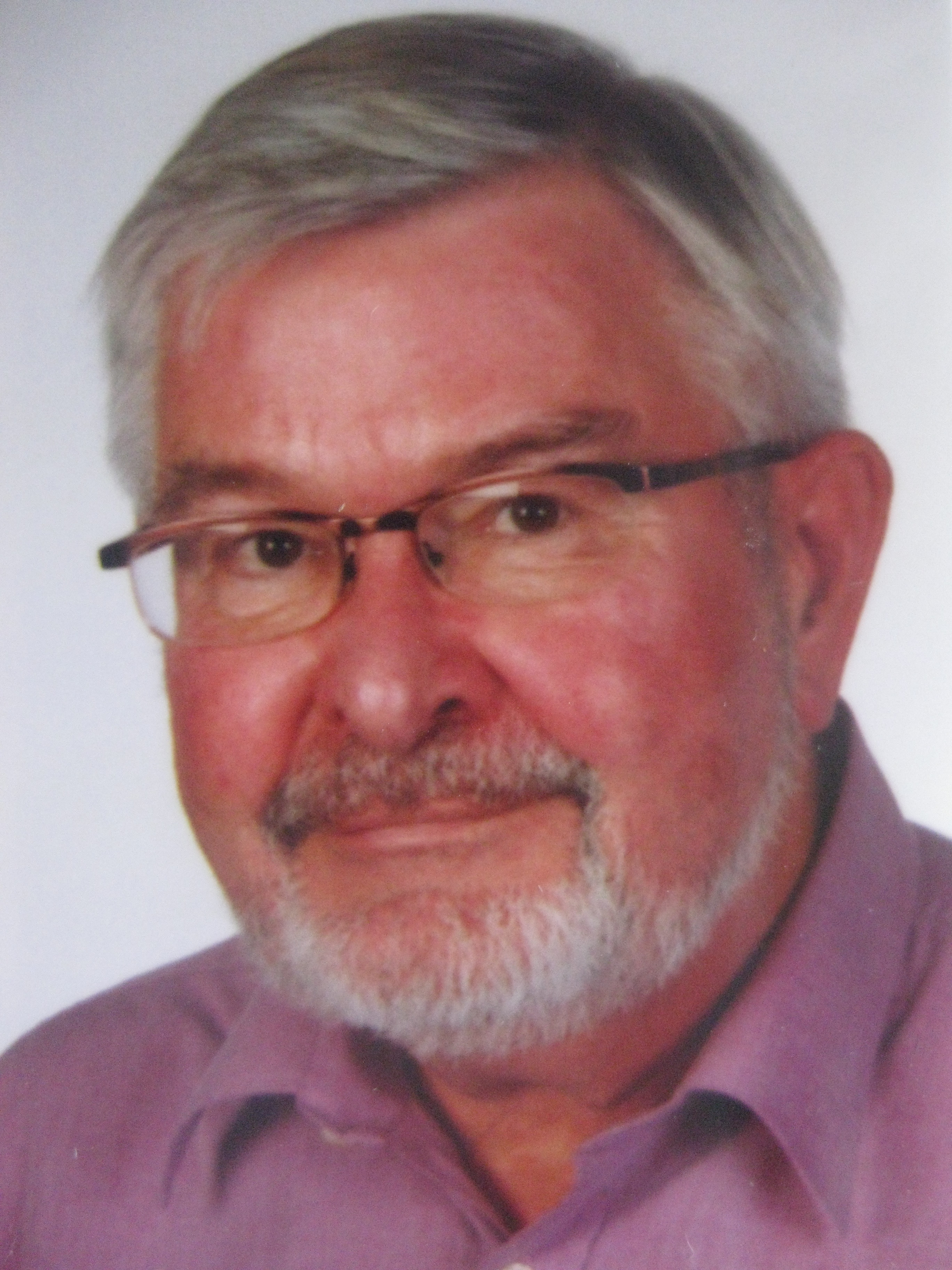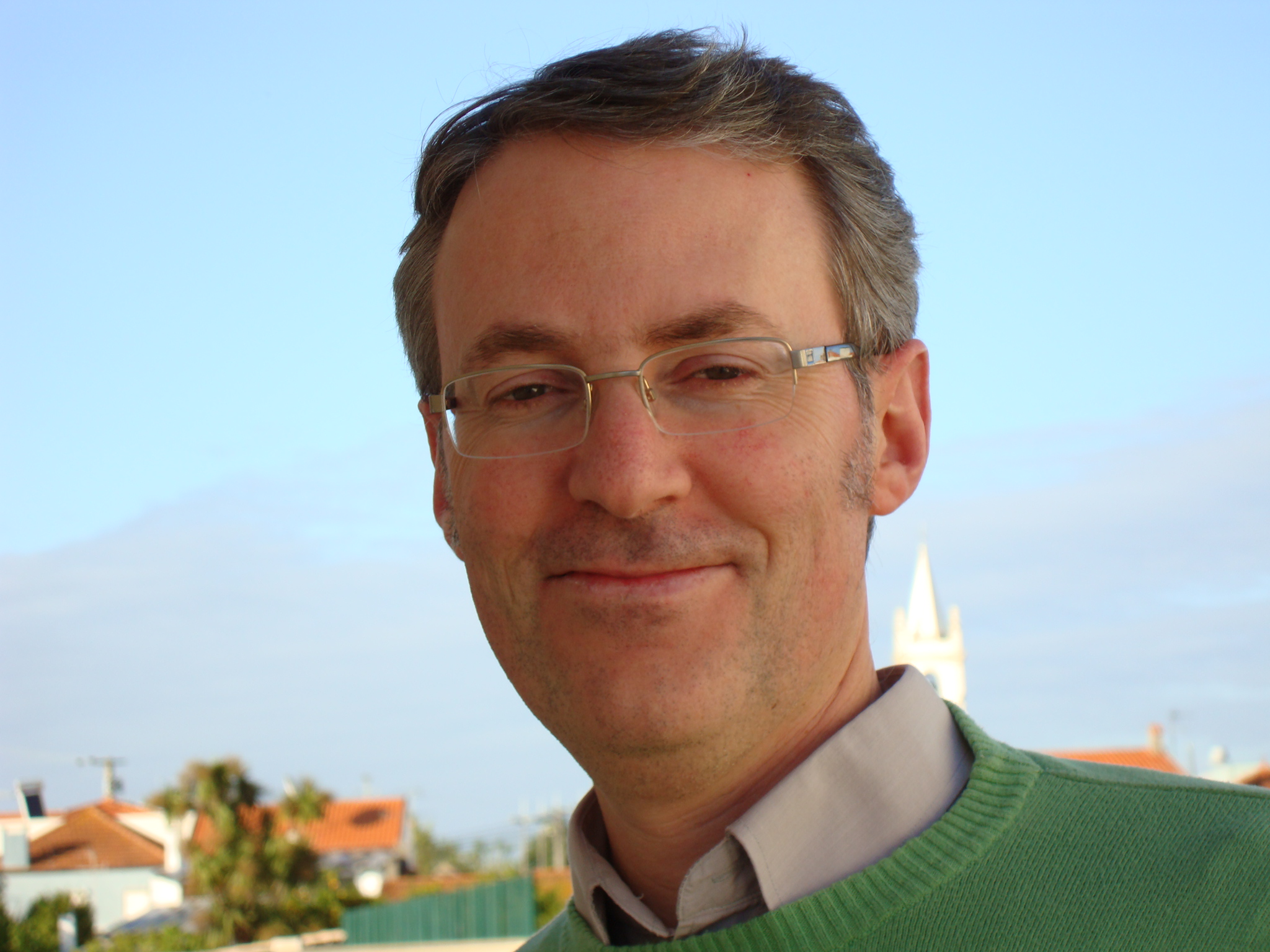14/07/2017, 15:00 — 16:00 — Room P4.35, Mathematics Building
Yuri Karlovich, Universidad Autónoma del Estado de Morelos, Cuernavaca, México
Algebras of convolution type operators with PSO data
The Fredholm symbol calculus is constructed for the Banach algebras generated on the weighted Lebesgue spaces with slowly oscillating Muckenhoupt weights by all multiplication operators by piecewise slowly oscillating functions and by all convolution operators with piecewise slowly oscillating presymbols being Fourier multipliers. A new approach of identifying local spectra is presented, which allows one to complete the description of the Fredholm symbol calculus.
30/06/2017, 15:00 — 16:00 — Room 6.2.38, Faculty of Sciences of the Universidade de Lisboa
João Gouveia, Universidade de Coimbra
Polytopes, slack ideals and psd-minimality
The slack ideal is an algebraic object that codifies the geometry of a polytope. This notion was motivated by the study of psd-minimality of polytopes: A $d$-polytope is said to be psd-minimal if it can be written as a projection of a slice of the cone of $d+1$ by $d+1$ positive semidefinite matrices, the smallest possible size for which this may happen. We will show how the slack ideal can be used to extract conditions on psd-minimality, completing the classification of psd-minimal $4$- polytopes, settling some open questions and creating new ones. We will proceed to explore the relation of slack ideals and toric ideals of graphs and present some ongoing work and open questions.
05/06/2017, 15:00 — 16:00 — Room 6.2.38, Faculty of Sciences of the Universidade de Lisboa
Alicia Roca, Universitat Politècnica de València
Lattices of invariant subspaces
Given $\mathbb{F}$ an arbitrary field and $A\in M_{n}(\mathbb{F})$, the set of $A$-invariant subspaces of $\mathbb{F}^{n}$ is a lattice with inclusion as order, intersection as meet and linear sum as join. We denote this lattice by $\operatorname{Inv}(A)$.
An $A$-invariant subspace $V\subseteq \mathbb{F}^{n}$ is $A$-hyperinvariant ($A$-characteristitc) if it is invariant for every matrix $T\in Z(A)$, i.e. commuting with $A$ ($T\in Z^*(A)$, i.e. commuting with $A$ and $T$ non singular). It is straightforward to see that the set of $A$-hyperinvariant ($A$-characteristic) subspaces is a sublattice of $\operatorname{Inv}(A)$. We denote this sublattice by $\operatorname{Hinv}(A)$ ($\operatorname{Chinv}(A)$). Obviously, \[\operatorname{Hinv}(A)\subseteq \operatorname{Chinv}(A)\subseteq \operatorname{Inv}(A).\] If the characteristic polynomial of $A$ splits over $\mathbb{F}$, the study of these lattices can be reduced to the nilpotent case. Let $J\in M_{n}(\mathbb{F})$ be a nilpotent Jordan matrix.
In this talk we recall the general properties of $\operatorname{Inv}(J)$ and analyze which of those properties are preserved in the sublattice $\operatorname{Hinv}(J)$ and, if $\mathbb{F}=GF(2)$, in $\operatorname{Chinv}(A)$ (the only case where $\operatorname{Hinv}(J)\neq \operatorname{Chinv}(J)$).
In addition we analyze the cardinality of $\operatorname{Hinv}(J)$ and $\operatorname{Chinv}(J)$.
Joint work with David Mingueza, M. Eulàlia Montoro.
02/06/2017, 15:00 — 16:00 — Room 6.2.38, Faculty of Sciences of the Universidade de Lisboa
Ricardo Mamede, Universidade de Coimbra
Gray codes for the hyperoctahedral group
A (cyclic) $n$-bit Gray code is a (cyclic) ordering of all $2^n$ binary words of length $n$ such that consecutive words differ in a single bit. Alternatively, an $n$-bit Gray code can be viewed as a Hamiltonian path of the $n$- dimensional hypercube $Q_n$, and a cyclic Gray code as a Hamiltonian cycle of $Q_n$. This idea has been generalized as follows. A Gray code for any combinatorial family of objects is a listing of all objects in that family such that successive objects differ in some prescribed, usually “small", way. The definition of “small" depends on the particular family, its context, and its applications. In this talk, we construct Gray codes for the finite reflection groups, with a particular focus on signed permutations and some of its restrictions: signed involutions and signed involutions without fixed points.
19/05/2017, 15:00 — 16:00 — Room 6.2.38, Faculty of Sciences of the Universidade de Lisboa
Deividi Pansera, Universidade do Porto
Semisimple Hopf actions and factorization through group actions
Let $H$ be a Hopf algebra over a field $F$ acting on an algebra $A$. Let $I \subseteq \operatorname{Ann}_H(A)$ be a Hopf ideal of $H$, then one says that the action of $H$ on $A$ \textit{factors through} the quotient Hopf algebra $H/I$. If there exists $I \subseteq \operatorname{Ann}_H(A)$ such that $H/I \cong F[G]$, for some group $G$, we say that the action of $H$ on $A$ factors through a group action. In 2014, Etingof and Walton have shown that any semisimple Hopf action on a commutative domain factors through a group action [EtingofWalton]. Also in 2014, using their previous result, Cuadra, Etingof and Walton showed that any action of a semisimple Hopf algebra $H$ on the $n$th Weyl algebra $A=A_n(F)$, with $\operatorname{char}(F) = 0$, factors through a group action [CuadraEtingofWalton].
In this talk we will briefly present a generalization of Cuadra, Etingof and Walton's result. Namely, that any action of a semisimple Hopf algebra $H$ on an iterated Ore extension of derivation type in characteristic zero factors through a group action [LompPansera]. We also present a work in progress on semisimple Hopf algebra actions on the quantum polynomial algebras which do not factor through a group actions.
This talk is all based on my upcoming Ph.D. Thesis under the supervision of Christian Lomp.
References
[EtingofWalton] Etingof, P., Walton, C. (2014). Semisimple Hopf actions on commutative domains. Adv. Math. 251: 47–61. doi:10.1016/j.aim.2013.10.008.
[CuadraEtingofWalton] Cuadra, J., Etingof, P., Walton, C. (2015). Semisimple Hopf actions on Weyl algebras Adv. Math. 282:47–55. doi:10.1016/j.aim.2015.05.014.
[LompPansera] Lomp, C., Pansera, D. A note on a paper by Cuadra, Etingof and Walton. Communications in Algebra 1532-4125. doi:10.1080/00927872.2016.1236933
05/05/2017, 15:00 — 16:00 — Room 6.2.38, Faculty of Sciences of the Universidade de Lisboa
Tara Brough, Centro de Matemática e Aplicações, UNL
Word problems of free inverse monoids
In semigroups, $y$ is an inverse of $x$ if $xyx = x$ and $yxy = y$. An inverse monoid is a monoid (semigroup with identity) in which every element has a unique inverse. I will describe the free objects in the category of inverse monoids: for any set $X$, the free inverse monoid on $X$ is denoted $\operatorname{FIM}(X)$. The word problem of a monoid is, informally, the problem of deciding whether two words over a given generating set represent the same element of the monoid. I will explain how this can be considered as a formal language, and discuss the language type (e.g. context-free, context-sensitive) of the word problem of $\operatorname{FIM}(X)$ for a finite set $X$.
The talk will focus primarily on the rank 1 case, in which words over the standard generating set can be viewed as walks in one dimension.
21/04/2017, 15:00 — 16:00 — Room P3.10, Mathematics Building
Teresa Sousa, Escola Naval
Monochromatic edge decompositions of graphs
Let $H=(H_1, ..., H_k)$ be a fixed $k$-tuple of graphs and let $G$ be a graph on $n$ vertices whose edges are colored with $k$ colors. A monochromatic $H$-decomposition of $G$ is a partition of its edge set such that each part is either a single edge or a copy of $H_i$ monochromatic in color $i$. The aim is to find the smallest number, denoted by $f(n,H,k)$, such that, any $k$-edge colored graph with $n$ vertices admits a monochromatic $H$-decomposition with at most $f(n,H,k)$ parts. We will consider the problem when $H$ is a fixed $k$-tuple of cliques (a clique is a complete graph) for all values of $k$. The results presented will involve both the Turán numbers and the Ramsey numbers. This is joint work with Henry Liu and Oleg Pikhurko.
24/03/2017, 15:00 — 16:00 — Room 6.1.27, School of Sciences, Lisbon University
Raquel Simões, Faculdade de Ciências, Universidade de Lisboa
Negative Calabi-Yau triangulated categories
Calabi-Yau (CY) triangulated categories are those satisfying a useful and important duality, characterised by a number called the CY dimension. Much work has been carried out on understanding positive CY triangulated categories, especially in the context of cluster-tilting theory. Even though CY dimension is usually considered to be a positive (or fractional) number, there are natural examples of CY triangulated categories where this “dimension” or parameter is negative, for example, stable module categories of self-injective algebras. Therefore, negative CY triangulated categories constitute a class of categories that warrant further systematic study. In this talk, we will consider an important class of generating objects of negative CY triangulated categories, namely simple-minded systems and study their mutation behaviour. We will focus on an example given by triangulated categories generated by spherical objects, whose combinatorics plays a useful role in the study of its representation theory.
 17/03/2017, 15:00 — 16:00 — Room P4.35, Mathematics Building
17/03/2017, 15:00 — 16:00 — Room P4.35, Mathematics Building
Natasha Samko, Luleå University of Technology
On Weighted estimates for Operators of Harmonic Analysis in Morrey type Spaces
In this talk we present results on weighted boundedness of various operators of harmonic analysis, such as maximal and potential type operators, Hardy type operators and commutators of Hardy operators, in Morrey type spaces.
21/12/2016, 14:00 — 15:00 — Room 6.2.33, Faculty of Sciences of the Universidade de Lisboa
Manuel Silva, Universidade Nova de Lisboa/CMA
Ramsey theory for infinite words
In combinatorics of words, a concatenation of $k$ consecutive equal blocks is called a power of order $k$. We define an anti-power of order $k$ as a concatenation of $k$ consecutive pairwise distinct blocks of the same length. We show that every infinite word contains powers of any order or anti-powers of any order. That is, the existence of powers or anti-powers is an unavoidable regularity. We will also generalize two combinatorial constructions given by Justin and Pirillo concerning arbitrarily large monochromatic $k$-powers occurring in infinite words and give a new classe of infinite words that do not allow infinite monochromatic factorizations.
 14/12/2016, 14:00 — 15:00 — Room P3.10, Mathematics Building
14/12/2016, 14:00 — 15:00 — Room P3.10, Mathematics Building
Yuri Karlovich, Universidad Autónoma del Estado de Morelos, México
Two-sided and one-sided invertibility of functional operators.
Criteria of the two-sided and one-sided invertibility of Wiener type functional operators with slowly oscillating coefficients and shifts on the Lebesgue spaces over positive half-line are established on the basis of representations in terms of discrete operators, parametric factorization of families of Wiener type continuous functions on the unit circle and the limit operators techniques.
 30/11/2016, 14:00 — 15:00 — Room P3.10, Mathematics Building
30/11/2016, 14:00 — 15:00 — Room P3.10, Mathematics Building
António Caetano, Universidade de Aveiro
Atomic and molecular decompositions in variable exponent function spaces
In this talk we report on recent results concerning atomic and molecular decompositions in 2-microlocal Besov and Triebel -Lizorkin spaces with variable integrability. We show that, in most cases, the convergence implied in such decompositions holds not only in the distributions sense, but also in the function spaces themselves. As an application, we give a simple proof for the denseness of the Schwartz class in such spaces. Some other properties, like Sobolev embeddings, will also be dealt with via atomic representations.
The reported research is joint work with Alexandre Almeida.
23/11/2016, 14:00 — 15:00 — Room 6.2.33, Faculty of Sciences of the Universidade de Lisboa
David Pauksztello, Università di Verona
An introduction to string combinatorics for gentle algebras
Gentle algebras are a class of finite-dimensional algebras that have a particularly accessible representation theory. In this talk, we shall define gentle algebras and explain the classification of indecomposable finite-dimensional modules in terms of so-called string combinatorics. We shall see how this allows us to control both homomorphisms between indecomposable modules and the short exact sequences whose outer terms are indecomposable. This last part will be a report on some joint work with Ilke Canakci and Sibylle Schroll. This talk will assume only background in linear algebra.
 16/09/2016, 11:50 — 12:15 — Room 6.2.38, Faculty of Sciences of the Universidade de Lisboa
16/09/2016, 11:50 — 12:15 — Room 6.2.38, Faculty of Sciences of the Universidade de Lisboa
Alexei Karlovich, Universidade Nova de Lisboa
Semi-Fredholmness of weighted singular integral operators with shifts and slowly oscillating data
Let $\alpha,\beta$ be orientation-preserving diffeomorphisms (shifts) of $\mathbb{R}_+ =(0,\infty)$ onto itself, which have only two fixed points $0,\infty$ and let $U_\alpha f=(\alpha')^{1/p}f\circ\alpha$, $U_\beta f=(\beta')^{1/p}f\circ\beta$ be the corresponding isometric shift operators on $L^p(\mathbb{R}_+)$. We prove sufficient conditions for the right and left Fredholmness on $L^p(\mathbb{R}_+)$ of singular integral operators of the form $A_+P_\gamma^++A_-P_\gamma^-$, where $P_\gamma^\pm=(I\pm S_\gamma)/2$, $S_\gamma$ is a weighted Cauchy singular integral operator, $A_+=aI-bU_\alpha$, $A_-=cI-dU_\beta$ are binomial functional operators with shifts. We assume that the coefficients $a,b,c,d$ and the derivatives of the shifts $\alpha',\beta'$ are bounded continuous functions on $\mathbb{R}_+$, which may have slowly oscillating discontinuities at $0$ and $\infty$. This is a joint work with Yuri Karlovich and Amarino Lebre.
 16/09/2016, 11:20 — 11:45 — Room 6.2.38, Faculty of Sciences of the Universidade de Lisboa
16/09/2016, 11:20 — 11:45 — Room 6.2.38, Faculty of Sciences of the Universidade de Lisboa
José Agapito Ruiz, Universidade de Lisboa
$\gamma$-numbers
Given a polynomial $f(t)=a_0+a_1 t+\cdots+a_n t \in\mathbb{R}[t]$, the $\gamma$-numbers of $f$ are the coefficients of this polynomial in its expansion with respect to the basis
\[ \Big\{ (1+t)^n, t(1+t)^{n-2},\ldots,t^{\lfloor \frac{n}{2} \rfloor} (1+t)^{n-2\lfloor \frac{n}{2} \rfloor},t^{\lfloor \frac{n}{2} \rfloor+1},\ldots,t^n\Big\}.\] In particular, if $f$ is palindromic (symmetric), its $\gamma$-numbers may be positive, negative, or zero (some of these numbers are necessarily zero). The $\gamma$-numbers are especially interesting when they are positive integers, since they can be associated to the counting of various combinatorial objects. The standard Eulerian and Narayana polynomials are two well-known examples of palindromic polynomials whose $\gamma$-numbers are positive integers.
The purpose of this talk is to present a general formula to compute the $\gamma$-numbers of any polynomial. We will pay special attention to the $\gamma$-numbers of a class of polynomials that contains the Eulerian and the Narayana polynomials, and discuss some of their combinatorial and geometrical interpretations.
 16/09/2016, 10:25 — 10:50 — Room 6.2.38, Faculty of Sciences of the Universidade de Lisboa
16/09/2016, 10:25 — 10:50 — Room 6.2.38, Faculty of Sciences of the Universidade de Lisboa
Catarina Carvalho, Universidade de Lisboa
Index formula for convolution type operators with piecewise continuous, slowly oscillating coefficients
We establish an index formula for Fredholm convolution type operators on $L^2(\mathbb{R})$ of the form $$A=\sum_{k=1}^m a_kW^0(b_k), \quad a_k,b_k\in \rm{alg}(SO,PC)$$ where $\rm{alg}(SO,PC)$ is the $C^*$-algebra of piecewise continuous functions on $\mathbb{R}$ that admit finite sets of discontinuities and slowly oscillate at $\pm\infty$.
First we consider the case where all $a_k$ or all $b_k$ are continuous on $\mathbb{R}$ and slowly oscillating at $\pm\infty$; then we assume that $a_k, b_k \in \rm{alg}(SO,PC)$ satisfy an extra Fredholm type condition to reduce to the above.
The study is based on a number of reductions to operators with smaller classes of coefficients, which include applying a technique of separation of discontinuities and eventually lead to the so-called truncated operators $A_r$, for sufficiently large $r\gt 0$, with $PC$ coefficients. We prove that $\operatorname{ind} A=\lim_{r\to\infty} \operatorname{ind} A_r$, which can be computed by classical results of Duduchava.
The talk is based on joint work with M. Amélia Bastos and Yuri I. Karlovich.
16/09/2016, 09:30 — 10:20 — Room 6.2.38, Faculty of Sciences of the Universidade de Lisboa
Pasquale Petrullo, Università degli Studi della Basilicata
Kostka-Foulkes polynomials, raising operators and chip-firing game
By means of the chip-firing game, an analogue of the Young raising operators can be defined for any connected simple graph. This gives in turn an analogue of the Hall-Littlewood symmetric functions for each of such graphs, then an analogue of the Kostka-Foulkes polynomials for any connected simple graph. Starting form this combinatorial approach, a subset of Kostka-Foulkes polynomials is considered which is closed under mutiplication. The elements of this semigroup are indexed by vectors of nonnegative integers and satisfy an interesting recursive formula.
 15/09/2016, 16:45 — 17:10 — Room 6.2.38, Faculty of Sciences of the Universidade de Lisboa
15/09/2016, 16:45 — 17:10 — Room 6.2.38, Faculty of Sciences of the Universidade de Lisboa
Frank-Olme Speck, Universidade de Lisboa
On the symmetrization of general Wiener-Hopf operators
This article focuses on general Wiener-Hopf operators given as $W = P_2 A |_{P_1 X}$ where $X,Y$ are Banach spaces, $P_1 \in \mathcal(X) \,,\, P_2 \in \mathcal(Y)$ are any projectors and $A \in \mathcal(X,Y)$ is boundedly invertible. It presents conditions for $W$ to be equivalently reducible to a Wiener-Hopf operator in a symmetric space setting where $X = Y$ and $P_1 = P_2$. The results and methods are related to the so-called Wiener-Hopf factorization through an intermediate space and the construction of generalized inverses of $W$ in terms of factorizations of $A$.
The talk is based upon joint work with Albrecht B\"{o}ttcher, to appear in J. Operator Theory.
15/09/2016, 16:15 — 16:40 — Room 6.2.38, Faculty of Sciences of the Universidade de Lisboa
Filipe Gomes, Universidade de Lisboa
Supercharacters of unitriangular groups and ramification graphs
In this talk we shall construct a ramification graph associated to the supercharacter theory of the unitriangular groups. This will be a graded graph such that the vertices on the nth level will be the supercharacters of $U_n$ and the edges will be given multiplicities using a form of restriction of supercharacters. We shall also examine how we can associate to this ramification graph a Riesz group and take a closer look at the possibility of defining on this group a product that makes in into a Riesz ring.
 15/09/2016, 14:55 — 15:45 — Room 6.2.38, Faculty of Sciences of the Universidade de Lisboa
15/09/2016, 14:55 — 15:45 — Room 6.2.38, Faculty of Sciences of the Universidade de Lisboa
Luís Castro, Universidade de Aveiro
Quadratic-phase Fourier transform
We will introduce a generalization of the Fourier transform that can also be seen as a generalization of the so-called linear canonical transform. Some of its operational and fundamental properties will be studied. This includes a Riemann-Lebesgue type lemma, invertibility results, a Plancherel type theorem and a Parseval type identity. Moreover, several new convolutions associated with the introduced transform are obtained. The applicability of those convolutions (containing weight-functions related to some amplitude and Gaussian functions) will be briefly illustrated by solving a class of integral equations. In addition, the norm decay rate of the corresponding quadratic-phase Fourier oscillatory integral operator will be analysed. The talk is based on joint work with N.M. Tuan.


